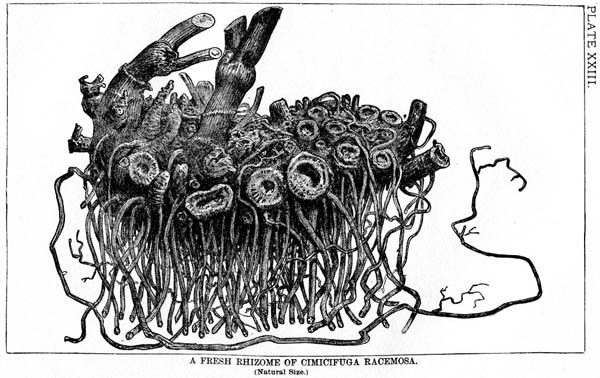It’s a truism that postmodernism has given us the uncentered, multiple, even rhetorical self. There are multiple theories of multiples—where to begin? Perhaps because I wrote this chapter while I was spending a lot of time in my garden, I was taken with the idea of Deleuze and Guattari’s rhizome. In botany, and in my garden, a rhizome is known as rootstock, which grows and spreads through multiple nodes underground, and which might send up a flower from any and all of those nodes. For Deleuze and Guattari, the rhizome is a theory of knowledge that provides for multiple, nonhierarchical entry and exit points, a mapping rather than a tracing of knowledge. It works with planes and interconnected and tangled lines rather than through vertical and hierarchical lines, as does the “arborescent.” They write: “A rhizome has no beginning or end; it is always in the middle, between things, interbeing, intermezzo” (27).
The rhizome’s six principles
1 and 2: Connection and heterogeneity: In a rhizomatic structure, any point can be connected to any other, and must be—"this is very different from the tree or root, which plots a point, fixes an order" (Deleuze and Guattari 7).
3: Multiplicity:
It is only when the multiple is effectively treated as a substantive, "multiplicity," that it ceases to have any relation to the One as subject or object, natural or spiritual reality, image and world. . . . There is no unity to serve as a pivot in the object, or to divide in the subject. There is not even the unity to abort in the object or "return" in the subject. A multiplicity has neither subject nor object, only determinations, magnitudes, and dimensions that cannot increase in number without the multiplicity changing in nature. (Deleuze and Guattari 8)
4: Signifying rupture: You can break a rhizome, but it will start up again along an old line, or on a new line.
5 and 6: Cartography and decalcomania: A rhizome "is not amenable to any structural or generative model. It is a stranger to any idea of genetic axis or deep structure. . . . [It is] a map and not a tracing" (13, emphasis in original). Deleuze and Guattari write, "What distinguishes the map from the tracing is that it is entirely oriented toward an experimentation in contact with the real. The map does not reproduce an unconscious closed in upon itself; it constructs the unconscious" (12). The rhizomatic is opposed to the arborescent, the rhizome opposed to the tree:
The tree is filiation, but the rhizome is alliance, uniquely alliance. The tree imposes the verb "to be," but the fabric of the rhizome is conjunction, "and . . . and . . . and." This conjunction carries enough force to shake and uproot the verb “to be.” Where are you going? Where are you coming from? What are you heading for? These are totally useless questions. (24–25)
